Dual clutch transmission operation
The dual clutch transmission has six forward speeds and one reverse speed.
The individual speeds are selected automatically in the D (Drive) position.
-
The dual clutch transmission can be thought of as an automatically shifting manual transmission. It gives the driving feel of a manual transmission, yet provides the ease of a fully dual clutch transmission.
-
When D (Drive) is selected, the transmission automatically shifts through the gears similar to a conventional dual clutch transmission. Unlike a traditional dual clutch transmission, the gear shifting can sometimes be felt and heard as the actuators engage the clutches and the gears are selected.
-
The dual clutch transmission incorporates a dry-type dual clutch mechanism, which allows for better acceleration performance and increased fuel efficiency whilst driving. But it differs from a conventional dual clutch transmission because it does not incorporate a torque converter. Instead, the transition from one gear to the next is managed by clutch slip, especially at lower speeds.
As a result, shifts are sometimes more noticeable, and a light vibration can be felt as the transmission shaft speed is matched with the engine shaft speed. This is a normal condition of the dual clutch transmission.
-
The dry-type clutch transfers torque more directly and provides a direct drive feeling which may feel different from a conventional dual clutch transmission. This may be more noticeable when launching the vehicle from a stop or when travelling at low, stop-and-go vehicle speeds.
-
When rapidly accelerating from a lower vehicle speed, the engine RPM may increase dramatically as a result of clutch slip as the dual clutch transmission selects the correct gear. This is a normal condition.
-
When accelerating from a stop on an incline, press the accelerator smoothly and gradually to avoid any shudder feeling or jerkiness.
-
When travelling at a lower vehicle speed, if you release the accelerator pedal quickly, you may feel engine braking before the transmission changes gears. This engine braking feeling is similar to operating a manual transmission at low speed.
-
When driving downhill, you may wish to move the gear shift lever to Manual shift mode and downshift to a lower gear in order to control your speed without using the brake pedal excessively.
-
When you turn the engine on and off, you may hear clicking sounds as the system goes through a self-test. This is a normal sound for the dual clutch transmission.
-
During the first 1,500 km, you may feel that the vehicle may not be smooth when accelerating at low speed. During this run-in period, the shift quality and performance of your new vehicle is continuously optimised.
The indicator on the instrument cluster displays the shift dial position when the Engine Start/Stop button is in the ON position.
To reduce the risk of serious injury or death:
-
Always check the surrounding areas near your vehicle for people, especially children, before shifting a vehicle into D (Drive) or R (Reverse).
-
Before leaving the driver's seat, always make sure the vehicle is shifted to the P (Park) position, then apply the parking brake, then place the Engine Start/Stop button to the OFF position. Unexpected and sudden vehicle movement can occur if these precautions are not followed.
-
Do not use engine braking (using the paddle shifters to shift from a higher gear to a lower gear) on slippery roads. The vehicle may lose traction with the roadway, resulting in a collision.
P (Park)
Always come to a complete stop before shifting into P (Park).
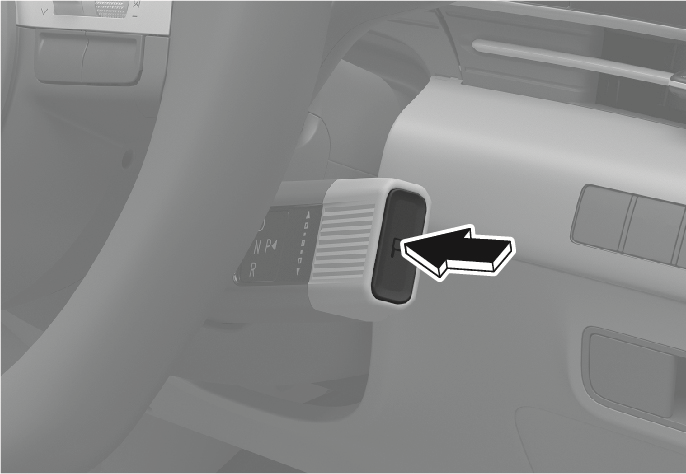
2C_PressPButton
To shift the gear to P (Park), press the P button whilst pressing the brake pedal.
If you turn the engine off in R (Reverse), N (Neutral) or D (Drive), the gear will automatically shift to P (Park).
-
Shifting into P (Park) whilst the vehicle is moving may cause you to lose control of the vehicle.
-
When parking on an incline, shift the gear to P (Park) and apply the parking brake to prevent the vehicle from rolling downhill.
-
Do not use the P (Park) position instead of the parking brake.
Automatic gear shift to P (Park)
The gear is shifted to P (Park) automatically under the following conditions:
-
When the engine is turned off with the vehicle in R (Reverse), D (Drive) or N (Neutral).
-
When the driver’s door is open with the engine running, the vehicle in R (Reverse), D (Drive) or N (Neutral) and the vehicle at a standstill.
-
When the driver’s door is open with the vehicle in N (Neutral) and the vehicle is off.
In situations the gear must be in P (Park), always check if the gear is shifted to P (Park) by checking the instrument cluster.
R (Reverse)
Use this position to drive the vehicle rearward.
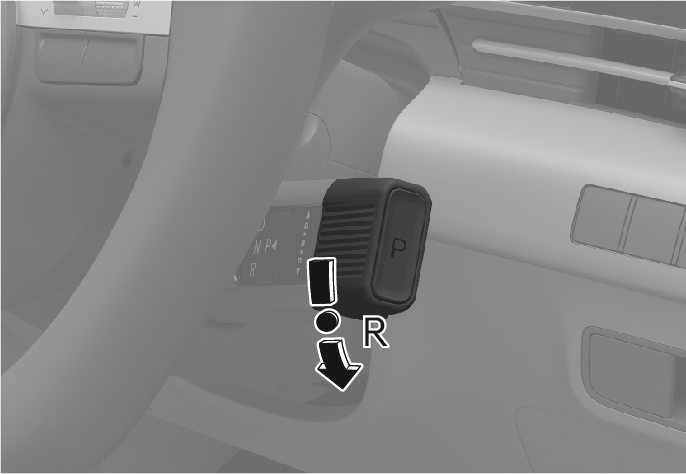
2C_ShiftButtonRPosition
To shift the gear to R (Reverse), rotate the rotary gear shift dial to R (Reverse) whilst pressing the brake pedal.
When the vehicle is stopped in R (Reverse) or D (Drive), if the driver’s door is opened and the driver's seat belt is unfastened, the gear shifts to P (Park) automatically.
Always come to a complete stop before shifting into or out of R (Reverse) to prevent damaging the transmission.
N (Neutral)
The wheels and transmission are not engaged.
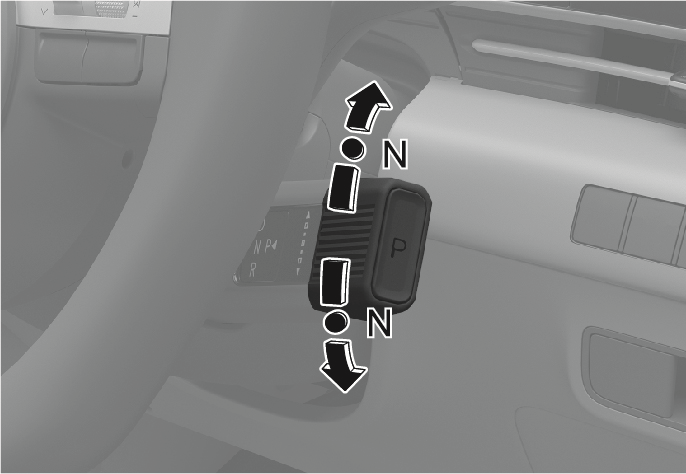
2C_ShiftButtonNPosition
To shift the gear to N (Neutral), rotate the rotary gear shift dial to N (Neutral) from R (Reverse) or D (Drive) whilst pressing the brake pedal.
Always press the brake pedal when you are shifting from N (Neutral) to another gear.
-
Do not shift into gears unless your foot is firmly on the brake pedal.
-
Do not shift gears with the accelerator pedal pressed. Wait until the engine RPM is normal. The vehicle may suddenly move if you shift gears and release the brake pedal when the RPM is high.
To stay in N (Neutral) when vehicle is OFF
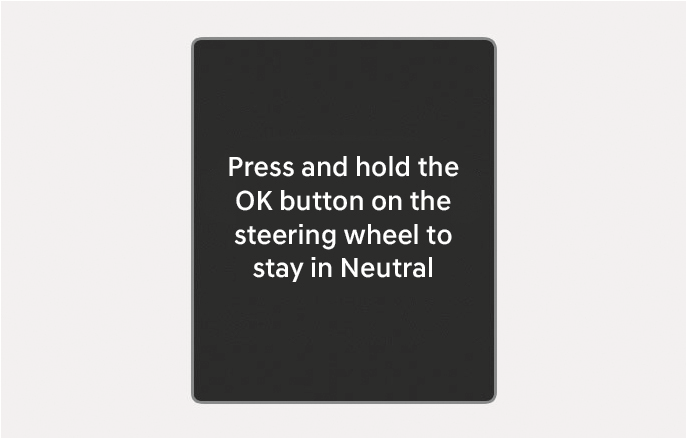
2C_ToStayNPositionInfo
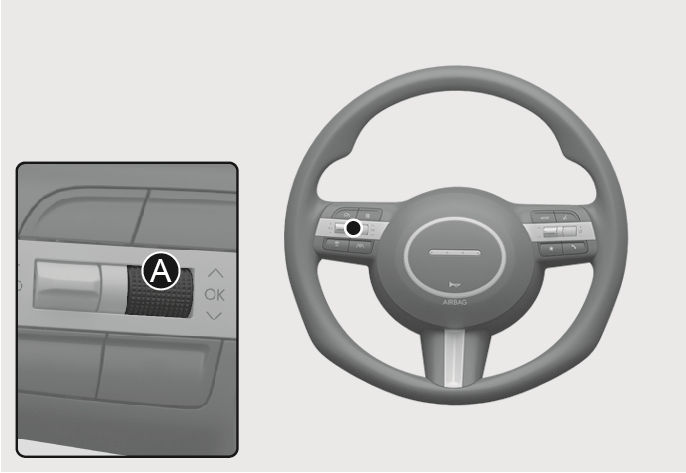
2C_SteeringWheelOkButton
If you want to stay in N (Neutral) after the engine is OFF (Engine Start/Stop button in the ACC position), do the following:
-
Turn off Auto Hold and release Electronic Parking Brake when the engine is running.
-
Rotate the shift dial to N (Neutral) whilst pressing the brake pedal.
-
Take your foot off the brake pedal. The message "Press and hold the OK button on the steering wheel to stay in Neutral" appears on the instrument cluster display.
-
Press and hold the OK button [A] on the steering wheel for more than 1 second.
-
When the message "N will stay engaged when the vehicle is Off" appears on the instrument cluster display, press the Engine Start/Stop button whilst pressing the brake pedal.
If you open the driver's door, the gear automatically shifts to P (Park) and the Engine Start/Stop button changes to the OFF position.
With the vehicle in N (Neutral) the Engine Start/Stop button is in the ACC position. In the ACC position, the doors cannot be locked. The battery may discharge if left in the ACC position for a long time.
D (Drive)
The transmission automatically shifts through a 6-gear sequence, providing the best fuel economy and power.
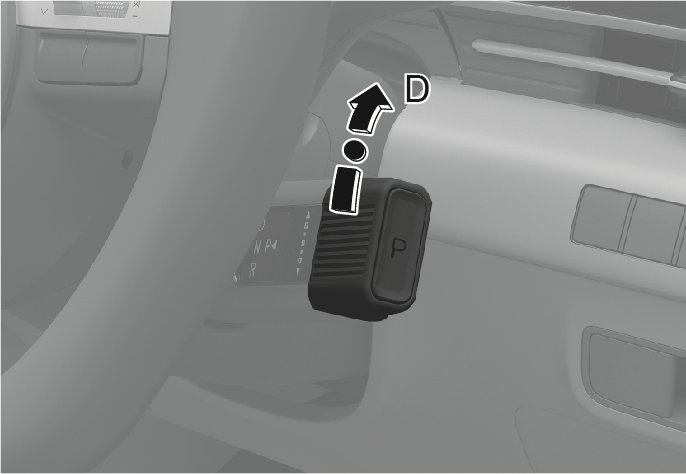
2C_ShiftButtonDPosition
To shift the gear to D (Drive), rotate the rotary gear shift dial to D (Drive) whilst pressing the brake pedal.
For extra power when passing another vehicle or driving uphill, press the accelerator pedal further until you feel the transmission downshift to a lower gear.
When the vehicle is stopped in the D (Drive) position, if you open the driver's door with the seat belt unfastened, the gear shifts to P (Park) automatically.
If the vehicle is moving in D (Drive), the gear may not automatically shift to P (Park) to protect the dual clutch transmission damage.
Always come to a complete stop before shifting into D (Drive).
When you start after stopping on a steep incline, even if the gear is in D (Drive), if you do not press the accelerator or brake pedal, the vehicle may roll rearwards, which can cause an accident.
For your safety, the dual clutch transmission has a shift-lock system which prevents shifting the transmission from P (Park) or N (Neutral) into R (Reverse) or D (Drive) unless the brake pedal is pressed.
To shift from P (Park) or N (Neutral) into R (Reverse) or D (Drive):
-
Press and hold the brake pedal.
-
Start the engine.
-
Press the brake pedal and put the vehicle in R (Reverse) or D (Drive).
You cannot shift gears, when the battery is discharged.
In an emergency:
-
Connect the jumper cables from another vehicle or from a another battery to the jump-starting terminals inside the engine compartment.
For more information, refer to the “Jump starting” section in chapter 8.
-
Release the Electronic Parking Brake (EPB) with the Engine Start/Stop button in the ON position.
-
Shift the gear to the N (Neutral) position. Refer to the "Jump starting" section in this chapter.
Always come to a complete stop and continue to press the brake pedal.
Shift the gear to P (Park), apply the parking brake, and press the Engine Start/Stop button to the OFF position.
Take the Key with you when leaving the vehicle.
-
When you stay in the vehicle with the engine running, be careful not to press the accelerator pedal for a long. The engine or exhaust system may overheat and start a fire.
-
The exhaust gas and the exhaust system are very hot. Keep away from the exhaust system components.
-
Do not stop or park over flammable materials, such as dry grass, paper or leaves. They may ignite and cause a fire.